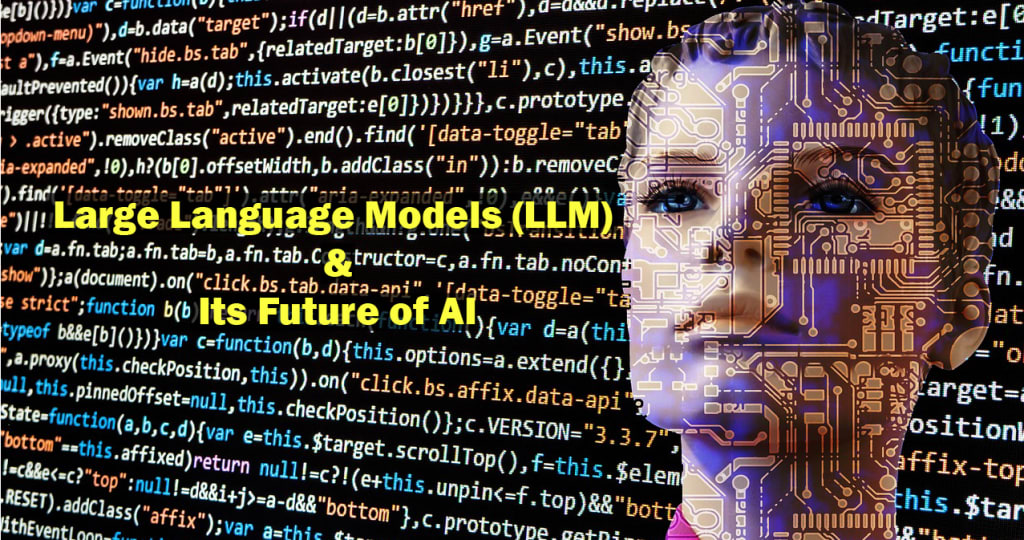
A large language model (LLM) is an artificial intelligence model designed to process and generate natural language. These models are typically based on deep learning neural networks that are trained on vast amounts of text data.
LLMs can be used for a variety of natural language processing tasks, such as language translation, summarization, text generation, and question answering. They work by analyzing the patterns and relationships in large amounts of text data, and then using that knowledge to generate new text that is grammatically correct and semantically meaningful.
One example of a large language model is GPT-3 (Generative Pre-trained Transformer 3), which is a language model developed by OpenAI that contains 175 billion parameters. GPT-3 can perform a wide range of natural language processing tasks, and has been used for applications such as chatbots, content generation, and even code generation.
- Data Collection: The first step in developing a language model is to collect a large dataset of text in the target language. This dataset should cover a wide range of topics and be diverse in terms of sources, genres, and styles.
- Preprocessing: Once you have collected the data, you need to preprocess it to prepare it for training. This may involve tasks such as cleaning the text, tokenizing it into words or subwords, and splitting it into training, validation, and testing sets.
- Model Architecture: Choose a suitable model architecture for the task at hand. This could be a transformer-based model, such as GPT, BERT, or T5, or a traditional neural network architecture like an LSTM or GRU.
- Training: Train the model on the preprocessed data using a suitable loss function and optimization algorithm. This may take several days or even weeks depending on the size of the data and the complexity of the model.
- Evaluation: Evaluate the performance of the trained model on a held-out validation set to ensure that it is generalizing well to new data. You may also want to perform additional evaluations, such as human evaluation or downstream task evaluation.
- Fine-tuning: Fine-tune the pre-trained model on a downstream task, such as language modeling, text classification, or machine translation, to improve its performance on that specific task.
- Deployment: Once the model has been trained and fine-tuned, it can be deployed in a production environment for use in real-world applications.
- Continual Learning: Continuously update and improve the model by retraining it on new data and fine-tuning it on new tasks to stay up-to-date with the latest developments in the field.

Another way to explain.
- Basics of Natural Language Processing (NLP): Start with understanding the basic concepts of NLP such as text processing, tokenization, part-of-speech tagging, Named Entity Recognition (NER), sentiment analysis, etc.
- Deep Learning: Learn the basics of deep learning, such as neural networks, backpropagation, and gradient descent. Get familiar with deep learning frameworks such as TensorFlow, PyTorch, and Keras.
- Recurrent Neural Networks (RNNs): RNNs are the basis of many NLP models, including language models. Learn about RNNs, Long Short-Term Memory (LSTM), and Gated Recurrent Unit (GRU) networks.
- Transformer-based models: Transformer-based models are currently the state-of-the-art in NLP. Learn about the transformer architecture, the self-attention mechanism, and how to train transformer models using pre-training and fine-tuning techniques.
- Language Modeling: Learn about language modeling, including the basics of how language models work, and how to train and evaluate them.
- Large language models: Once you have a good understanding of language modeling, you can dive deeper into large language models like GPT-3, T5, and BERT. Learn about their architecture, pre-training techniques, and how to use them for downstream NLP tasks such as text generation, question answering, summarization, and more.
- Applications of large language models: Learn about the various applications of large language models, such as chatbots, virtual assistants, language translation, content creation, and more.
- Keep up-to-date: As the field of NLP and large language models is rapidly evolving, it's essential to keep up with the latest research and developments. Follow research blogs, attend conferences, and participate in online communities to stay up-to-date.
Remember that learning about large language models is a long-term process, and it requires a lot of practice and patience. Start with the basics and gradually build your knowledge and expertise over time.
About the Creator
JV
With a passion for creating unforgettable characters and heart-pumping plotlines, this writer is sure to keep you on the edge of your seat. Get ready for a wild ride into the world of fiction with this talented wordsmith!






Comments
There are no comments for this story
Be the first to respond and start the conversation.